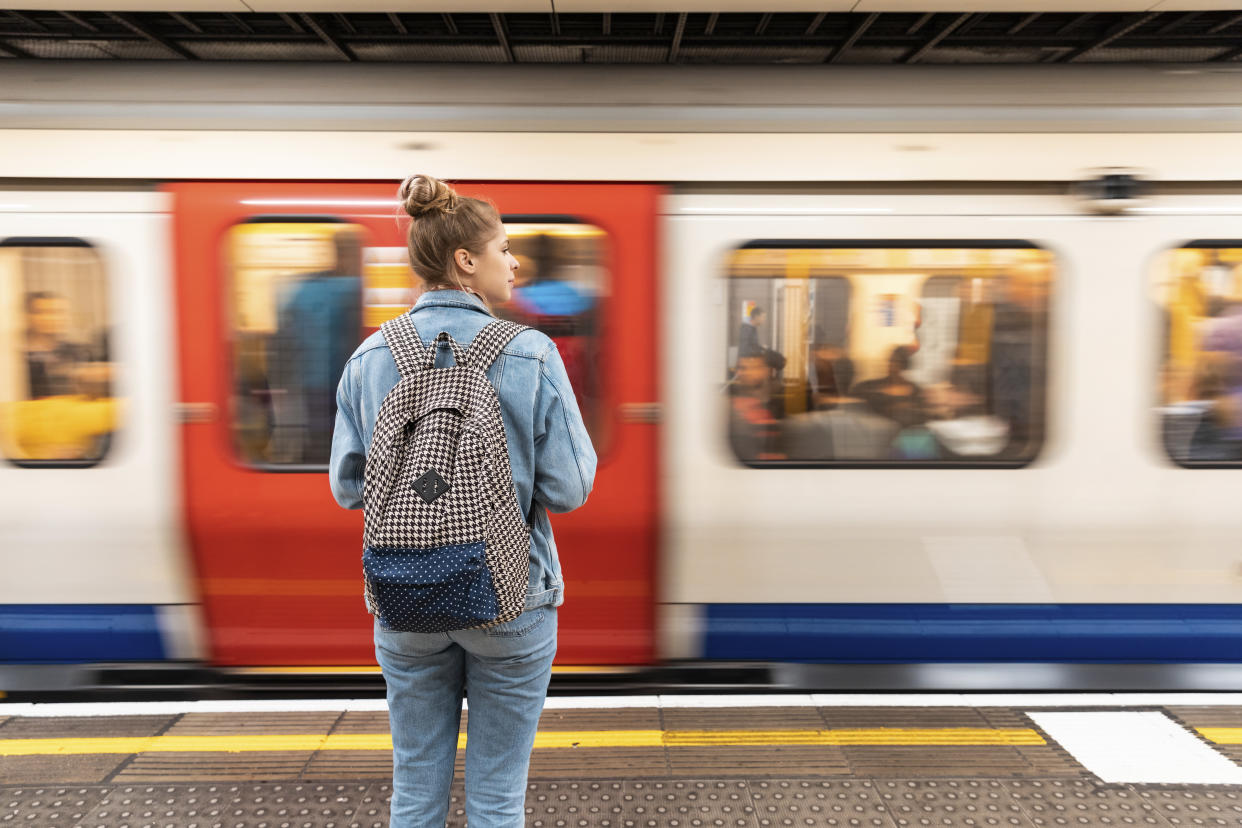Air pollution on the London underground is 15 times higher than the capital’s streets

Air pollution on the London underground is worse than the capital’s streets, research suggests.
Scientists from King’s College London measured levels across the tube, as well as on the city’s roads.
They found “particulate matter (PM) 2.5” was around 15 times higher on public transport than “surface and roadside environments”.
READ MORE: Air pollution kills more than 20,500 people every year in the UK
PM2.5 are microscopic particles smaller than 2.5μm, 400th of a millimetre. They float unseen in the atmosphere and can become “lodged” in the lungs.
Normally associated with vehicle emissions, they may also be “released” from tube wheels, escalators and refurbishment works, the scientists claim.
Inhaling the particles has been linked to everything from allergies and “lung dysfunction” to heart disease and even death, according to a government report.
“Our aim in this study was to make high quality measurements of the PM2.5 people are exposed to in the London underground,” lead author Dr David Green said.
“The results show they can be some of the highest concentrations they will encounter during their day.
“Currently, our understanding of the health effects of air pollution is based on measurements taken by fixed measurement stations above ground.
“Clearly these don’t represent what people are exposed to as they travel on the underground and these new measurements will help us improve these assessments.”
The London underground carries out around 2.8 million journeys every day, with the average trip lasting 47 minutes, the scientists wrote in the journal Environment International.
READ MORE: Air pollution triggers over 100 cardiac arrests a year
As well as being given off in tube stations directly, PM2.5 may also be drawn in from outdoors via tunnels and ventilation systems, they wrote.
To understand the extent of the problem, the scientists wore special rucksacks that detect PM2.5 levels around London.
They found levels on the underground averaged at 88 μg m-³, compared to 22 μg m-³ on “roadside environments” in the centre of the city.
The Victoria line was the worst hit, with a median of 361μg m-³ and up to 885μg m-³, compared to just 4μg m-³ on the District line.
The scientists put this down to the “enclosed system” of the Victoria line, while the partially above-ground District route spends “large amounts of time outside of deep tunnels”.
When compared to similar studies carried out elsewhere, the Victoria and Northern lines fared worse than undergrounds in Beijing, LA, Mexico, Seoul, Sydney and Barcelona.
Londoners who travel on the tube also face greater PM2.5 exposure than those who opt to cycle, drive or take the bus, the scientists warn.
They are calling on PM2.5 to be tackled at the busiest stations, like Oxford Circus, Waterloo and London Bridge.
“There might be ways to reduce your exposure such as switching to an alternative line with lower concentrations of PM2.5 or for shorter journeys it might be possible to switch to alternative modes of transport,” Dr Green said.
How to protect yourself against air pollution
Chris Large, senior partner at Global Action Plan, recommends people protect themselves by checking the daily air pollution forecast in their area.
In the UK, the Department for Environment Food & Rural Affairs (DEFRA) allows people to look up the level of nitrogen dioxide, sulphur dioxide and PM in their region.
DEFRA colour codes pollutant levels according to a low or high risk.
“On days when it’s higher than average, pregnant women and those with heart or lung conditions are advised to reduce their outdoor exercise,” Mr Large previously told Yahoo UK.
“It’s quite rare it’s that bad; maybe five-to-10 days a year.”
READ MORE: Growing up on a busy road 'stunts a child's lung development by up to 14%'
Day-to-day, people can reduce their exposure by avoiding busy roads where possible.
“Taking the back street can reduce the pollution someone is exposed to by 50%,” Mr Large said.
In our homes, Mr Large recommends we keep the air circulating as much as possible.
“Use the extractor fan, even if cooking from a gas or electric hob,” he said. “Pollutants come off the hob surface.”
While we may not want to hear it, everyday items like candles, air fresheners and hairspray also pollute our homes.
“I don’t want to say ‘never use a candle ever again’, but it is a source of indoor air pollution,” Mr Large said. “Use them sparingly and cautiously.”


